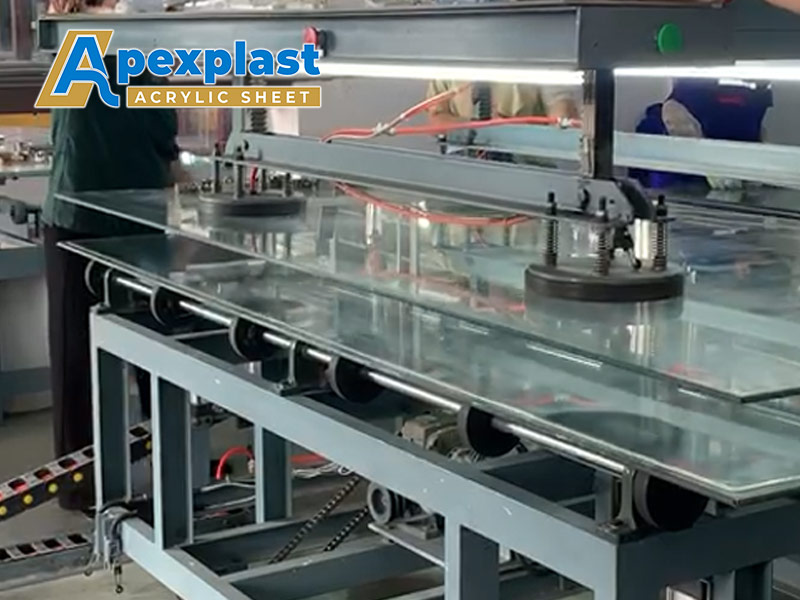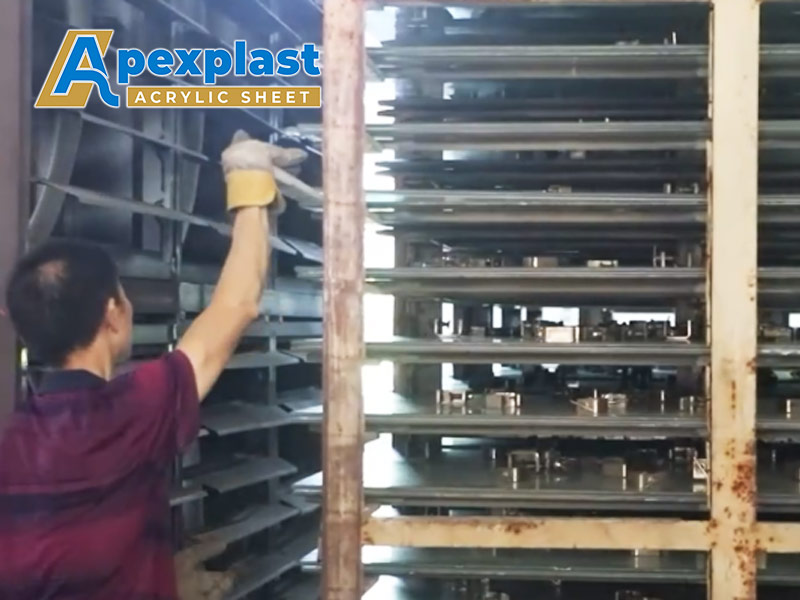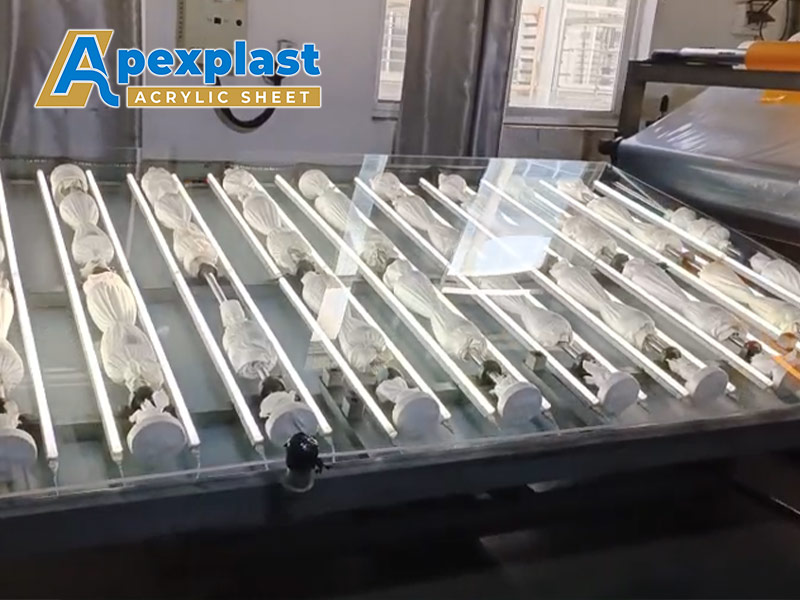How is a cast acrylic sheet made?
Apexplast is a professional acrylic sheet factory in China with 21 years of experience in acrylic sheet production. Cast acrylic sheet is our best-selling product, and many customers are curious about how it is made. Today, we’ll give you a detailed introduction to the production process of cast acrylic sheets.
1. Preparing the Molds
Everything begins with glass.
Each mold plate is cleaned — no dust, no oil, no fingerprints. Any small mark can ruin clarity later.
Two glass plates, one rubber strip in between. That strip decides the sheet’s thickness — thin for 3 mm, thick for 20 mm.
Three sides clamped tight, one left open.
That’s where the liquid goes in.

2. Mixing and Pouring
The raw material is the acrylic monomer — PMMA in liquid form.
We mix it with initiators and catalysts. Ratios are controlled digitally, so the reaction stays stable.
Then it’s poured into the mold, slowly, no air bubbles allowed. The last side gets sealed.
Now it begins to change — from liquid to solid. That’s polymerization.

3. Pre-curing in Water
The filled molds go into a rack, then into a 65 °C water bath.
It’s not fast. The thicker the sheet, the longer it takes —
3 mm about 3 ½ hours,
10 mm around 9,
20 mm close to a full day.
Too hot, and bubbles appear. Too cold, and curing stalls.
We keep it balanced. Layer by layer, the sheet hardens evenly.

4. Final Curing
Next stop: the oven. 125 °C.
This stage locks in the molecular structure and gives the sheet its real strength.
Thicker sheets take longer — a few hours more — but the result is solid and clear.
After cooling, it’s ready to be handled.

5. Demolding & Inspection
Opening the mold takes care. The glass is heavy; the sheets are still fresh.
Every piece is checked under strong light — we look for bubbles, flow marks, color issues.
Only the clean, flat, uniform ones pass.

6. Trimming & Film Protection
Edges are cut clean to remove sealing marks.
Some sheets get PE film on both sides for scratch protection.
Then they’re stacked, labeled, and ready for packaging.
Simple as that — but not easy.

Why Apexplast Cast Acrylic Sheet?
Because quality takes time.
Cast acrylic isn’t the quick way — it’s the right way when you need clarity, depth, and stability.
Higher molecular weight means stronger, more crack-resistant.
Light passes through — up to 93%.
Surface polishes beautifully.
Handles heat and weather better than most plastics.
That’s why architects, designers, and builders choose cast over extruded when details matter.
Apexplast: Clear About Quality
We make both cast and extruded acrylic sheets.
Used in advertising, construction, industrial applications — you name it.
Every batch is tested for light transmittance, flatness, thickness.
Computer-controlled systems keep production steady, from one order to the next.
We build trust the same way we build sheets — layer by layer, with clarity and control.
Which Sheet Fits Your Work?
Need thicker, polished, crystal-clear panels? Go for cast acrylic.
Need uniform thin sheets for mass use? Try extruded.
If you’re not sure, just tell us what you’re making — we’ll guide you.
If you want a supplier who understands how acrylic is really made — not just how it’s sold — talk to us.
Let’s make something strong, clear, and lasting together.
Contact Apexplast for samples, pricing, or production details.


